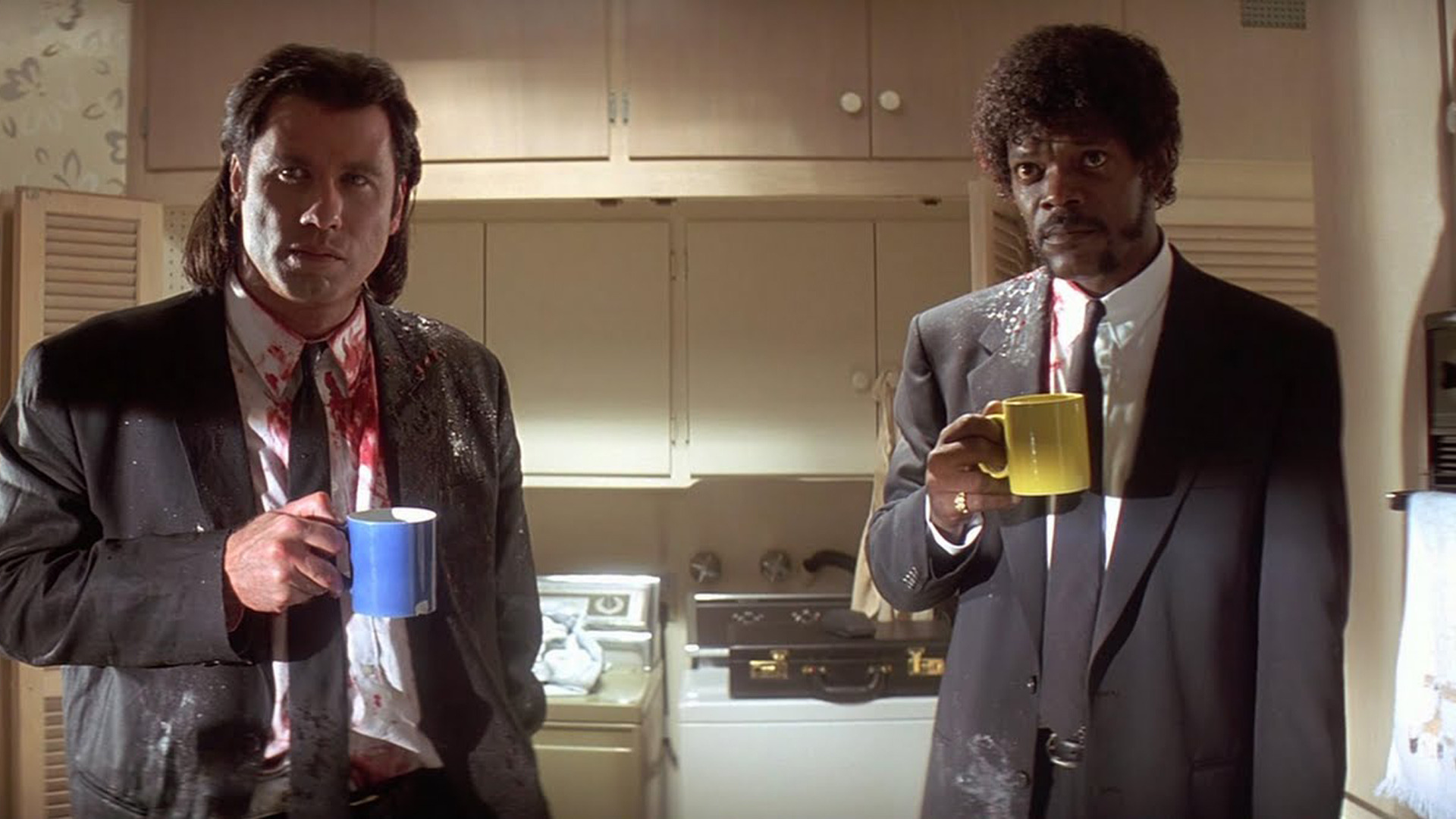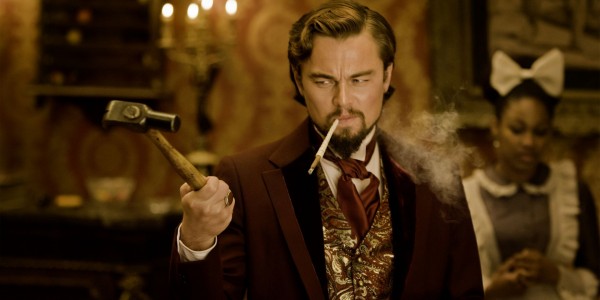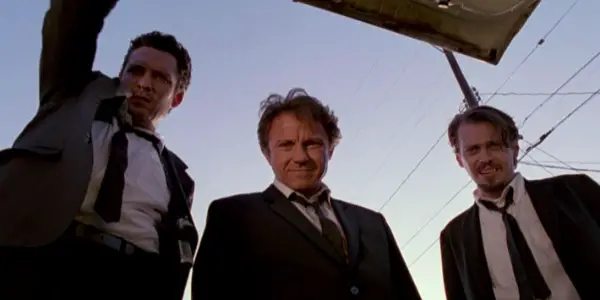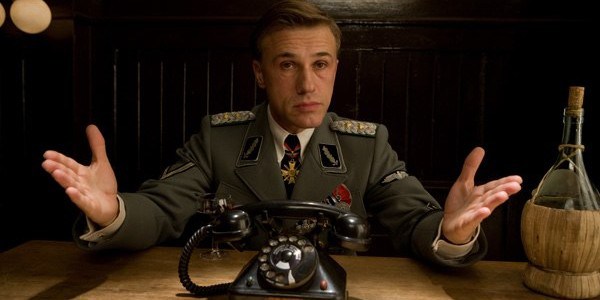Quintessential Quentin Tarantino Template

Rachael Sampson is a Yorkshire screenwriter and film critic. She…
Director Quentin Tarantino has hit our movie screens with violence, gore, action and thrills. His work creates controversy, and it is those controversial aspects that make him stand out as one of the best leading directors in the world of film. With his new film The Hateful Eight scheduled to be released at the end of this year, we cannot wait to see what the quirky director and writer comes up with next. We can, however, prepare ourselves to see some specific signature cinematic moves from him.
Alongside the familiar faces of Samuel L. Jackson, Kurt Russell, Tim Roth, Zoë Bell and Michael Madsen who have all appeared in Quentin’s previous films, we can expect to see a variety of other elements in his new movie. Here is a quintessential Quentin Tarantino movie template; highlighting the directors unique movie components which we see in the majority of his films, and most likely what we will see in his future films as well. It is this signature style that leaves his audiences wanting more.
Violence and Gore
It is a given that if you want to see a Quentin Tarantino movie, you should expect to see a few corpses, bullet wounds, blown off heads, etc. But what makes these scenes stand out is the camera’s un-squeamish attitude and prolonged exposure to the fatalities. He doesn’t cut out or purposely exclude violence. Instead, he exposes it with a dramatic depiction. His bright-red blood mix does not fly sparingly, splashing it all over the setting and on the cast to create a huge slaughterous mess. The over-exaggerated portrayal of death is similar to the idea of a teenage boy’s violent video game obsession, by going into a room with a gun and blowing up everything in sight.
In a famous 2003 interview, when Tarantino was questioned about the violence in his movies, he responded with “because it’s so much fun, Jan!” emphasising the inner kid and playful attitude he has with his movies. The amount of gore exposed in his films could be classified as making his movies fit the horror genre. However, Tarantino mixes his genres, and is not afraid to do so. He does not shy away from what some audiences might see as “distasteful” or “too much,” and he instead highlights a side of life which isn’t generically exposed in movies.

One of the more memorable and unforgettable scenes in the film Django Unchained includes a scene with two slaves fighting until one of them is dead, and to “finish” the opponent off, the loser is hit in the head with a hammer. The scene is quite difficult to watch, but it is there to create realism and controversy. It evokes emotion within the audience, a goal every director wishes to achieve, and this is apparent in all of Tarantino’s films. Having bits of shattered skull and brain stuck to the windows of a hitmans car in Pulp Fiction followed up with the line “aw man! I shot Marvin in the face!” creates a comically horrific situation, one that will stay imprinted into the minds of his audience for a long time.
Unusual Discussions
Tarantino includes some very interesting and humorous ideology in his films, and the best part of this ideology is that it has no relevance to the actual story itself. He allows us to get a strong understanding of the characters by letting the audience listen to them in a social setting, such as a bar, restaurant, or in a car. Examples of this in his works are in Death Proof when four girls in a diner discuss if carrying a gun or pepper spray is the safest option, and in Reservoir Dogs when Mr. Pink (Steve Buscemi) explains why he doesn’t tip waitresses.

Typically, filmmakers allow us to familiarise with characters through the actual key parts of the story, or give us a very short scene to infer the characters’ intentions. But Tarantino goes against the norm and creates his own way of telling us what the characters objectives are through simplistic everyday conversations. This then presents us with a shocking contrast to the actual world of the character.
Looking at the character of Mr. Pink in Reservoir Dogs, we see that he is cheap and will not conform to the norms of society by tipping waitresses if they are simply doing their job, with the rest of the “Dogs” opposing his reasons, saying that they feel like they have a moral obligation to tip waitresses because they only earn minimum wage. Hearing these men talk about having morals, only to then find out that they are attempting to rob a bank creates an interesting contrast from what our original instincts of them were.
In the instance of this movie, this concept is used to comedic effect as we hear these men at the start of the movie talk about Like A Virgin by Madonna, which suggests they are playful and immature characters. This method is apparent in a lot of Tarantino’s films, and this unique portrayal of characterisation separates his work from the rest and makes it stand out as quirky and enticing.
Monologues
Quentin Tarantino undeniably includes some very iconic and memorable monologues in his movies, more noticeably in his more recent films, and it is at these moments where he has the audience in the palm of his hand. He makes your eyes fixated on a tense and pivotal moment in the scene, all while trying to think about how the protagonist can get out of the situation alive.
Then suddenly, one of the characters contrast Tarantino‘s stereotypical approach of violence, and they untangle the confrontation simply with words. An example of this is in Django Unchained, when Django and Dr. King Schultz are trapped in a bar surrounded by townsfolk with guns, and the Doctor manipulates the situation by turning the tables and accuses the Sheriff of being a criminal. Or when Jules recites Ezekiel 25:17 from the bible to stop Honey Bunny and Pumpkin from stealing Wallace’s suitcase in Pulp Fiction. But the one which stands out as a truly original and powerful monologue is included in Inglourious Basterds.

Colonel Hans Landa from the SS delivers a monologue so captivating and powerful, that it leads to this antagonist finding out that Monsieur LaPadite is in fact sheltering Jews underneath his floorboards.
“If a rat were to scamper through your front door, right now, would you greet it with hostility? … Has a rat ever done anything to you to create this animosity you feel toward them? ‘Rats spread disease. They bite people.’ Rats were the cause of the bubonic plague, but that’s some time ago. I propose to you any disease a rat could spread, a squirrel could equally carry. Would you agree? Yet, I assume you don’t share the same animosity with squirrels that you do with rats, do you? Yet, they’re both rodents, are they not? And except for the tail, they even rather look alike, don’t they?” (The full monologue)
Tarantino’s interesting concepts and the unusual metaphors he uses only engage us and draw us in deeper to the story, as his ideas are refreshingly individual and inspiring. The deliverance of this speech from Christoph Waltz is exceptional. It is this speech that first allows the audience to make their assumptions on his character, and without Tarantino including this in his film, it wouldn’t have given us a strong understanding of how cunning and horrid he truly is. This movie received an amazing amount of awards, including Oscars, BAFTAS, Cannes, etc., and without Tarantino‘s unorthodox approach, it might not be as quotable, popular, and relevant as it is today.
Tarantino Cameo
A Tarantino movie wouldn’t quite be a Tarantino movie without an appearance from the man himself. He pops up in a variety of his films, varying his roles from being a main character in movies such as From Dusk Till Dawn and Reservoir Dogs to small roles, for example a barman in Death Proof, an Australian Miner in Django Unchained, and even the hands that strangle Diane Kruger in Inglourious Basterds. He not only directs and writes his films, he has to complete the cinematic triangle and star in his works too.

His appearance in these movies, whether it is a big role as Jimmie Dimmick in Pulp Fiction, or a little role as the voice machine in Jackie Brown, it is a true treat for any Tarantino fan. The talented director and writer also has talent as an actor, bringing life to many characters which he writes and then captures on camera. After his success with Pulp Fiction, he went on to play the role of a new director, ironically celebrating a rise of success in his movie Four Rooms. This could be considered arrogant and conceited by some, but it is what really makes him stand out.
Tarantino’s success has enabled him to create any narrative he wants, and his enthusiasm for the world of cinema cannot go unsaid. This is evident through his cameos. From the perspective of a Tarantino fan, his cameo’s are the icing on the cake; it acts as a physical signature on his work.
Conclusion
Tarantino‘s fearless attitude towards all things considered unconventional, obscene, explicit and violent is what makes him such a successful and unique director. He treads where others do not dare step and ignores critics’s controversial opinions regarding his movies. He has found his element and these signature moves from Quentin Tarantino are what we hope to see in The Hateful Eight and the rest of his films to come.
The director has recently announced that he will retire after his 10th movie, and has said that he likes the idea of leaving his audiences “wanting a bit more.” After The Hateful Eight, he will make two more movies, then retire from the business. Tarantino has said that “it is not etched in stone but that is the plan.” I think all audiences who watch his movies hope he does not stick to this plan, as he is a true asset to the world of film.
His audacious scenes of gore and violence, monologues, unusual discussions, cameos, title sequence style and classic cast, alongside many more specific Tarantino signatures, allow cinema to be seen from a different angle. His unique mind provides us with unforgettable cinematic experiences, and it is his personal template for filmmaking that always leaves us “wanting a bit more.”
Are you a fan of Quentin Tarantino’s signature movie moves? What do you think we will see in The Hateful Eight? Share your thoughts and comments below!
(top image: Pulp Fiction – source: Miramax Films)
Does content like this matter to you?
Become a Member and support film journalism. Unlock access to all of Film Inquiry`s great articles. Join a community of like-minded readers who are passionate about cinema - get access to our private members Network, give back to independent filmmakers, and more.
Rachael Sampson is a Yorkshire screenwriter and film critic. She often finds herself daydreaming about Andrea Arnold's filmography or crying over The Graduate.













